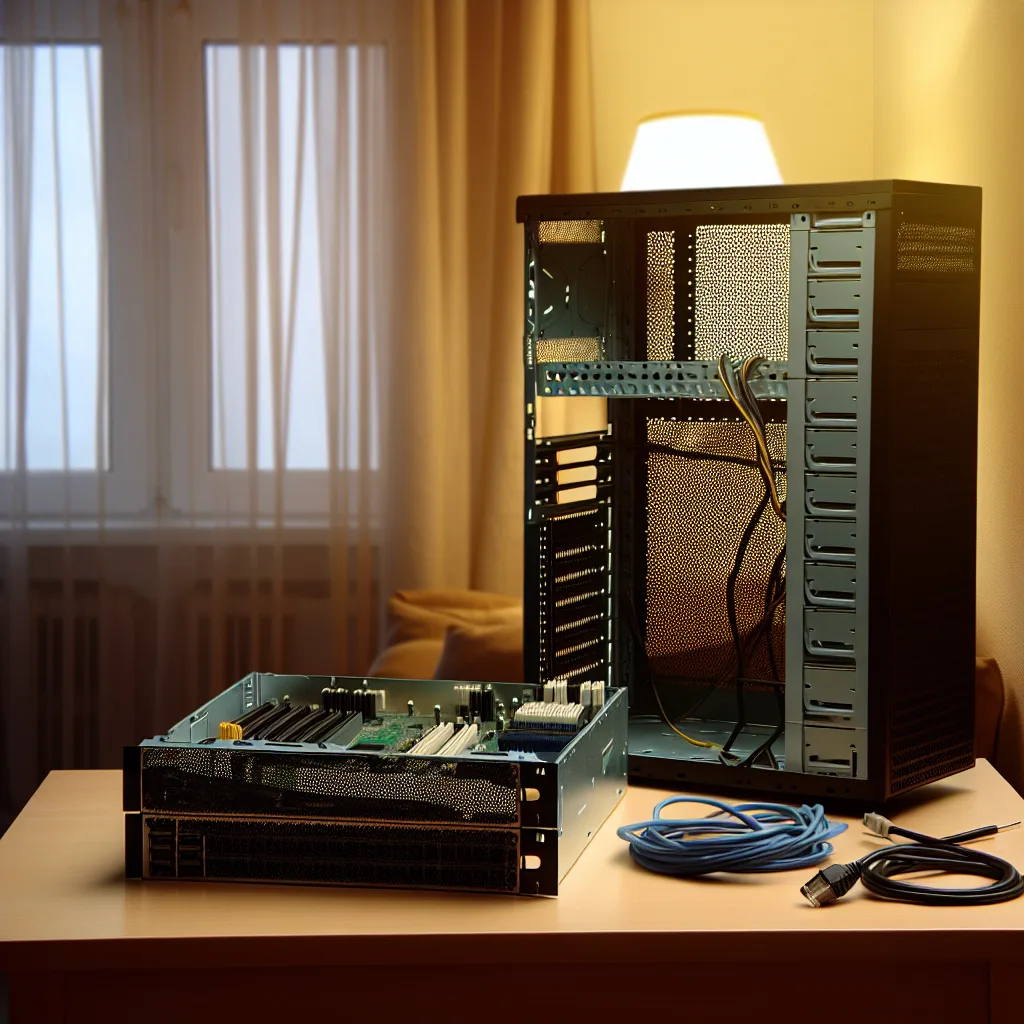Why I tore apart my perfectly good home server for a problem that’s a year away.
You ever get an idea in your head for a tech project that seems brilliant at 2 a.m., but feels a little silly in the light of day? That was me last week. I decided to tear apart my perfectly functional home server and move it into a rack-mount case, all to solve a problem I won’t even have for another year. This is the story of my latest adventure on my beginner home lab journey.
It all started with a simple thought: I’m planning to move out of my parents’ place next year, and I want my tech gear to be as easy to transport as possible. My current setup, a collection of standard PC cases and mini computers, wasn’t exactly “grab and go.” The idea of a neat, contained server rack started to sound very appealing. So, I jumped in headfirst.
My First Rack-Mount Project: A Beginner Home Lab Story
My primary machine is a TrueNAS server I built myself. It’s the heart of my digital life, handling backups for my family using Immich and serving up movies and shows through Jellyfin. It was running happily in a standard gaming PC case, built around a Ryzen 5 5600 processor. It’s not the most power-efficient chip for a 24/7 server, but it’s what I had, and it’s powerful enough to handle anything I throw at it.
But the seed was planted. I bought a rack-mount chassis and decided to migrate everything over, just to see what the process was like. It felt a bit like a dress rehearsal for a play that wasn’t opening for a year. Part of me felt like a bit of a dumbass for creating work for myself, but the other part—the tinkerer part—was excited for the challenge.
The migration itself was straightforward, just like building a PC but in a different-shaped box. But it was a great learning experience. I got a feel for how components fit, how airflow works differently, and how to plan for cabling in a more compact, horizontal space. If you’re considering a similar move, the official TrueNAS website is an invaluable resource for ensuring your software and hardware configurations play nicely together.
The Evolving Setup: More Than Just One Box
This server isn’t my entire setup. It’s part of a growing ecosystem I’ve been piecing together. My current iteration of the lab lives in a small 10-inch rack, which is where the new server case will eventually live.
Right now, that rack is home to a cluster of tiny, power-efficient computers:
* A Lenovo M920q
* A Dell Wyse 5070
* An HP EliteDesk 705 G2
They all run Proxmox, creating a mini-cloud where I can spin up virtual machines (VMs) and containers to experiment with. I use it for things like media trackers and a Tailscale container for secure remote access to my network. It’s a fantastic way to learn about virtualization without a huge hardware investment.
My network is managed by a dedicated MiniITX board with an N100 processor running OPNsense, a powerful open-source firewall. It gives me incredible control over my network traffic, something you just can’t get from an off-the-shelf router.
The Reality Check of a Beginner Home Lab
Here’s the part they don’t always show in those pristine home lab tours on YouTube: the reality. Lately, we’ve been hit with a massive surge in electricity prices here in Romania. Because of that, my little Proxmox cluster is mostly powered down. I only spin up the machines when I have time to actively tinker. A beginner home lab often involves balancing your passion for tech with practical things, like the monthly power bill.
And the cable management? Let’s just say it’s a work in progress. I did my best for now, but I’m waiting on some new fans to arrive before I tie everything down perfectly. It’s a reminder that a home lab is never truly “finished.” It’s a constantly evolving project.
So, was it silly to change the case a year before I needed to? Maybe. But I learned a ton, and now I’m one step closer to the organized, portable setup I was dreaming of. It’s all part of the fun of building things yourself, learning from the process, and creating a lab that perfectly fits your own needs—even the future ones.
